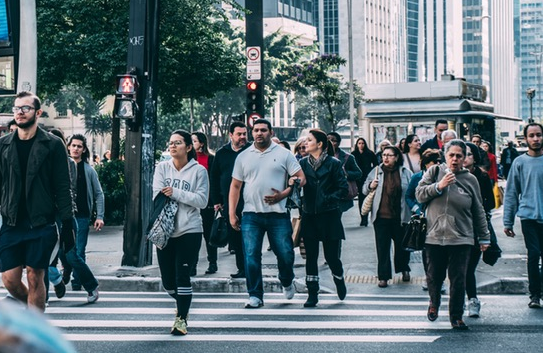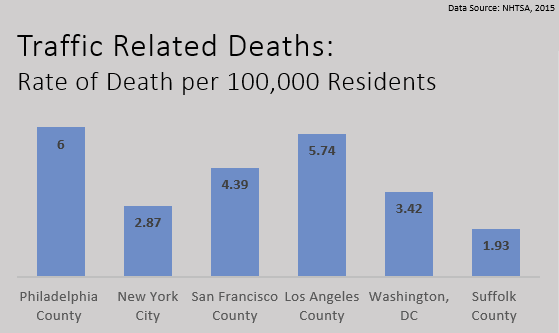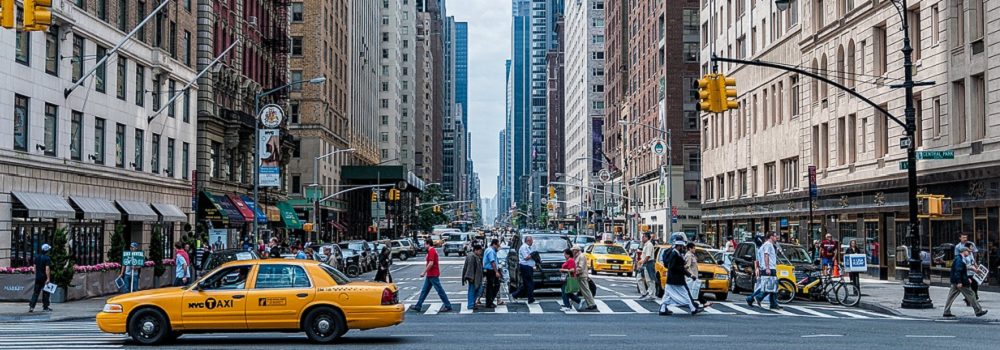“Everyone walks, and we want to encourage that, but at the same time we want to make sure that we all get to our destinations safely.” – Jonathan Adkins, GHSA Executive Director
The Governor’s Highway Safety Association (GHSA) recently released their annual report that projects an 11% increase in the number of pedestrian fatalities on U.S. roadways from 2015 to 2016. Pedestrians now account for the largest proportion of traffic fatalities recorded in the past 25 years. It is critical to understand this spike in metrics and work towards implementing effective countermeasures.
Pedestrians now account for the largest proportion of traffic fatalities recorded in the past 25 years. It is critical to understand this spike in metrics and work towards implementing effective countermeasures.
Vision Zero is a strategy put forth by elected officials, and others, to reduce all traffic fatalities and serious injuries to zero by 2030. The plan was first implemented in Sweden in the 90’s and has since proven successful in decreasing pedestrian deaths across Europe. Vision Zero is a commitment by a community and its key city departments (ex. mayor, police, transportation and public health) to help transform their streets into a safe place for all pedestrians, cyclists and motorists.
The Vision Zero strategy is focused around education, engineering and enforcement:
- Lowering speed limits
- Redesigning streets
- Implementing meaningful behavior change campaigns
- Enhancing data-driven traffic enforcement
Cities around the world have been working towards their own version of Vision Zero, including the city of Philadelphia. Philly is known for having one of the highest rates of traffic-related deaths per  100,000 residents. In November of 2016, Mayor Jim Kenney, signed an executive order to create a Vision Zero Task Force to help prevent future tragedies. The task force is currently in the process of drafting an action plan that would include everything from creating more protected bike paths to adding red light cameras throughout the city. It is anticipated that he final action plan will be released in the fall of 2017 after receiving community feedback.
100,000 residents. In November of 2016, Mayor Jim Kenney, signed an executive order to create a Vision Zero Task Force to help prevent future tragedies. The task force is currently in the process of drafting an action plan that would include everything from creating more protected bike paths to adding red light cameras throughout the city. It is anticipated that he final action plan will be released in the fall of 2017 after receiving community feedback.
To view and comment on Philadelphia’s draft action plan click HERE.






